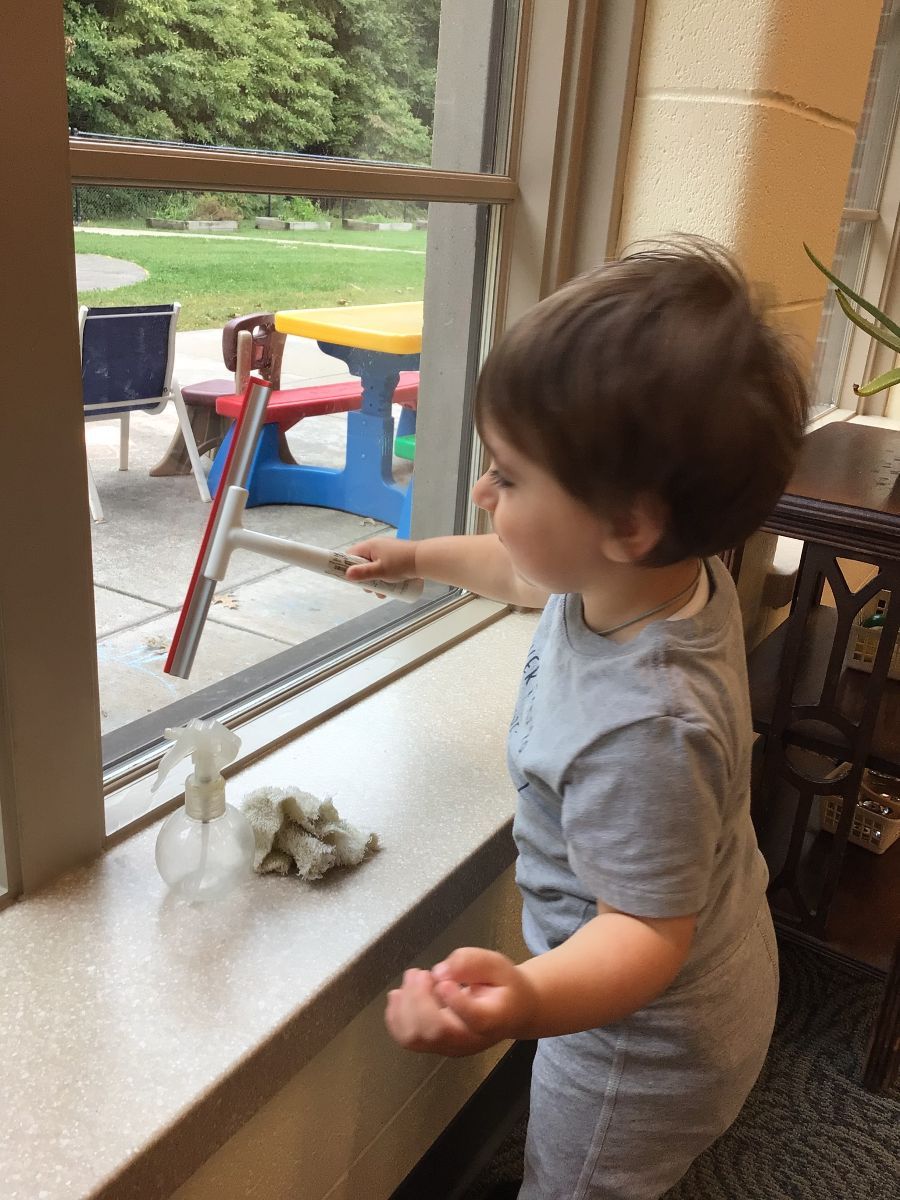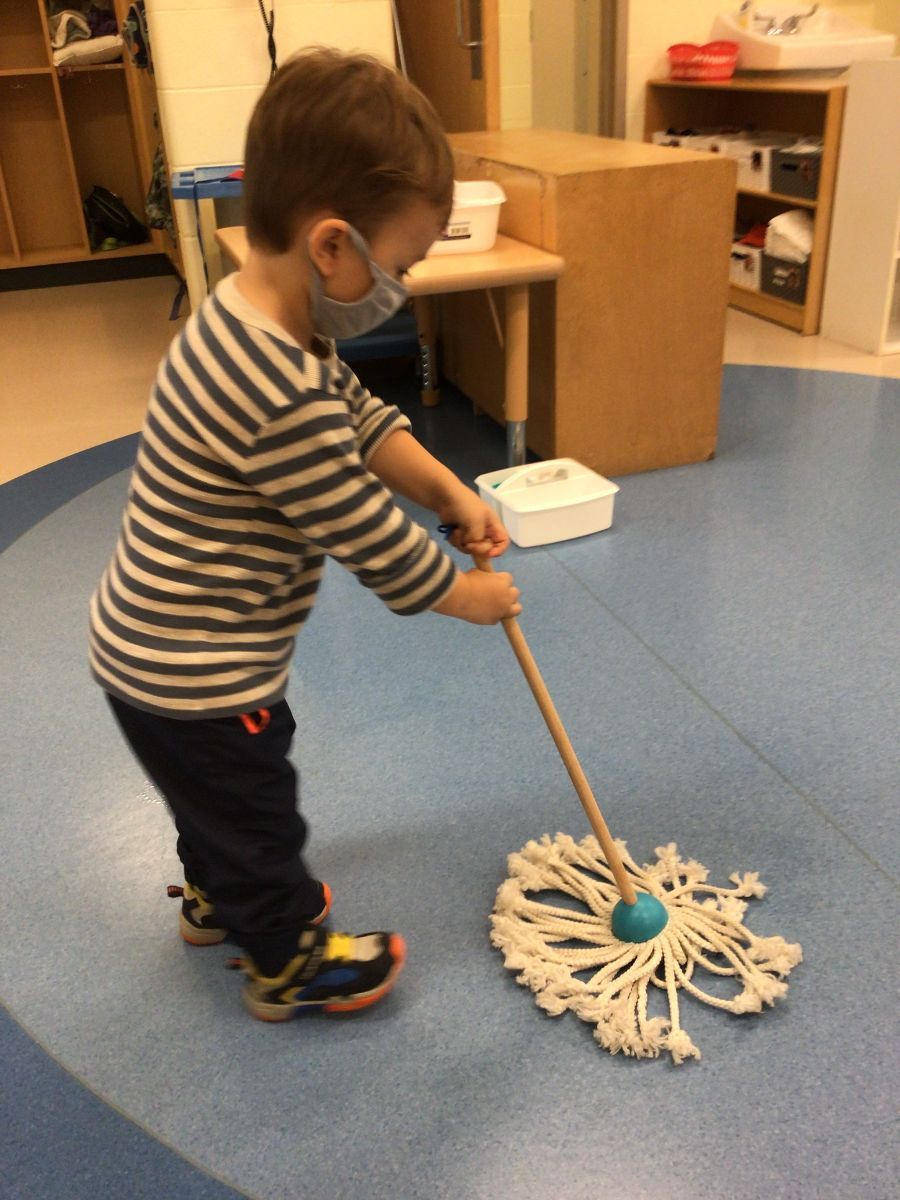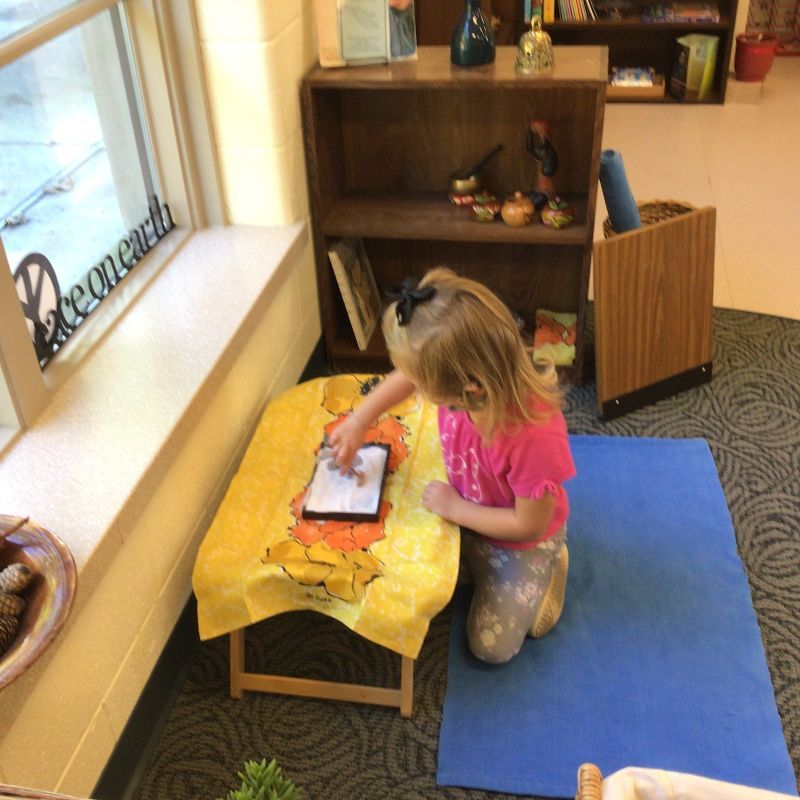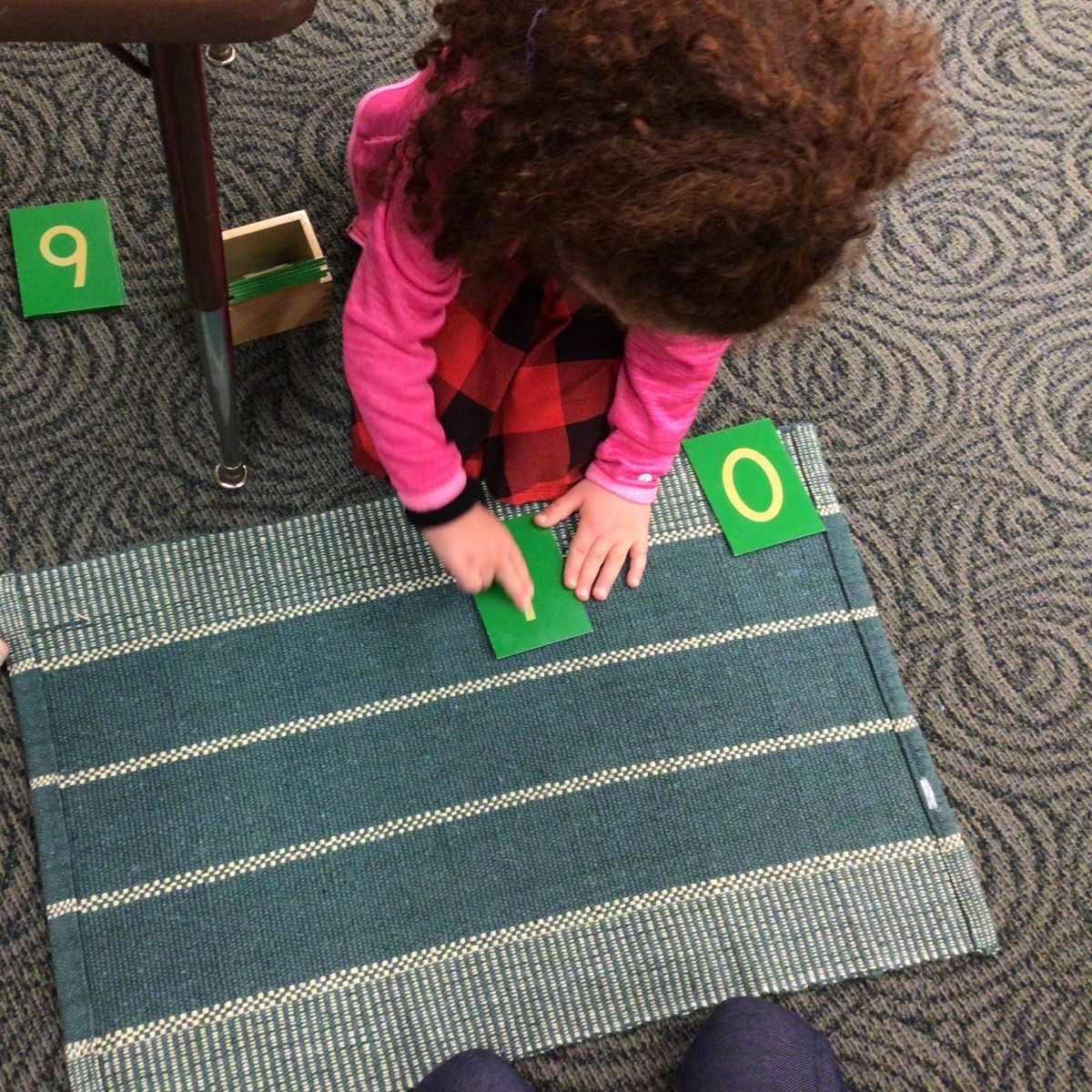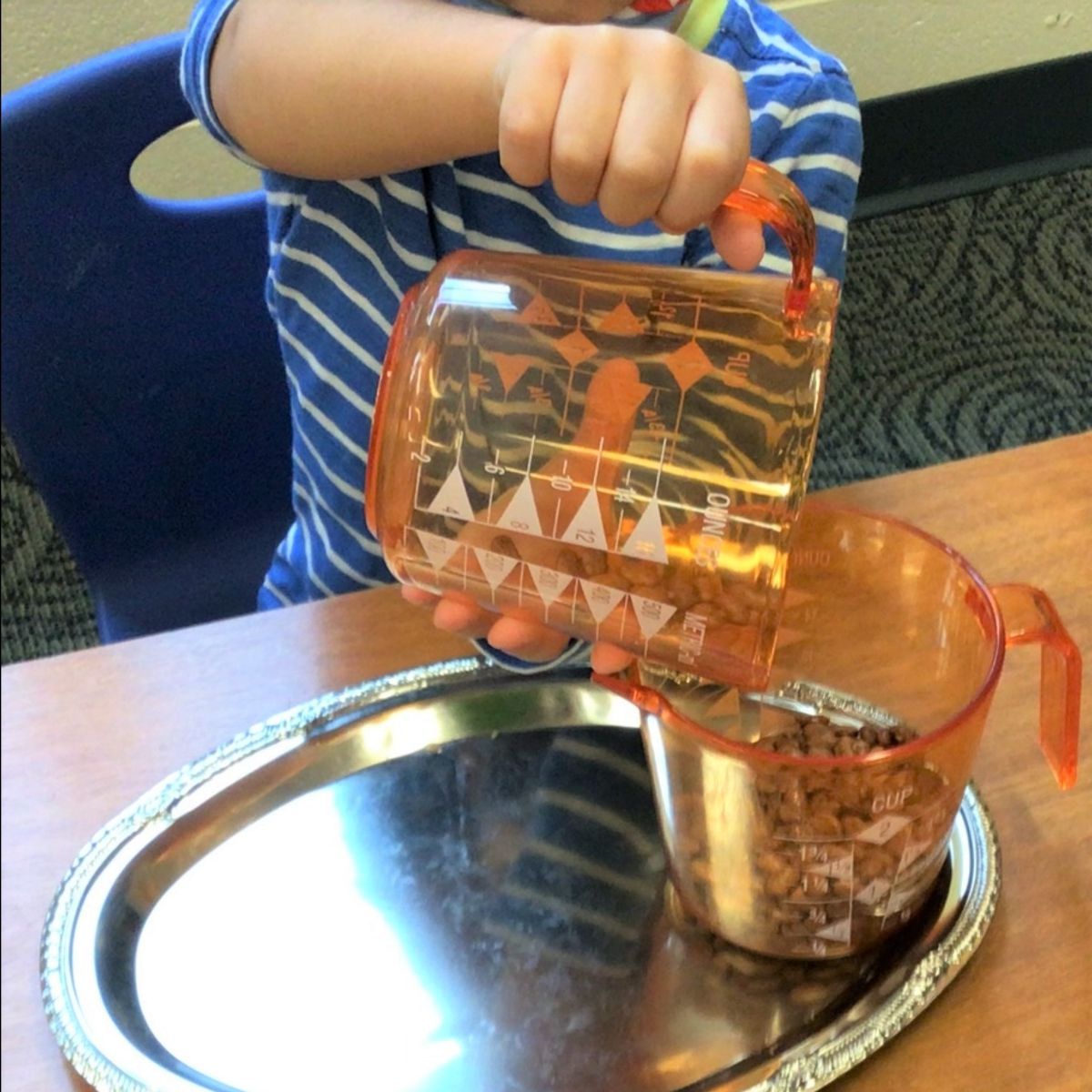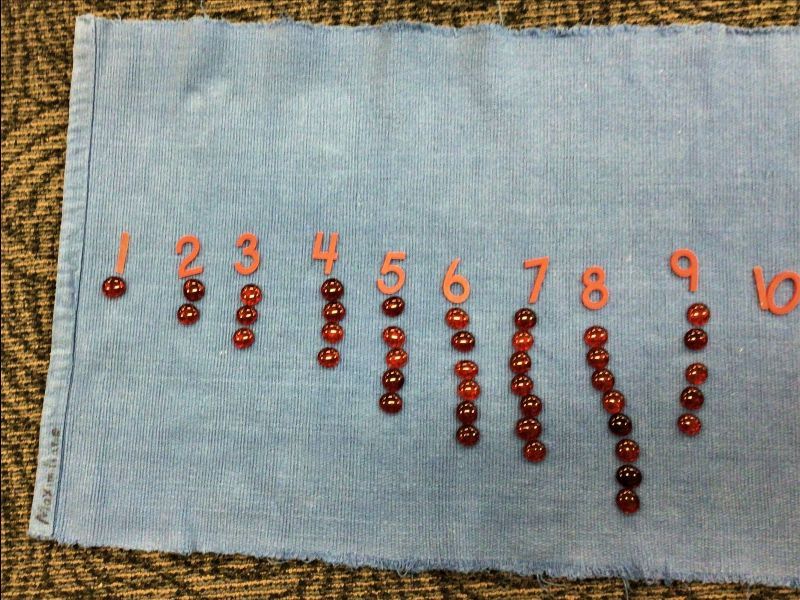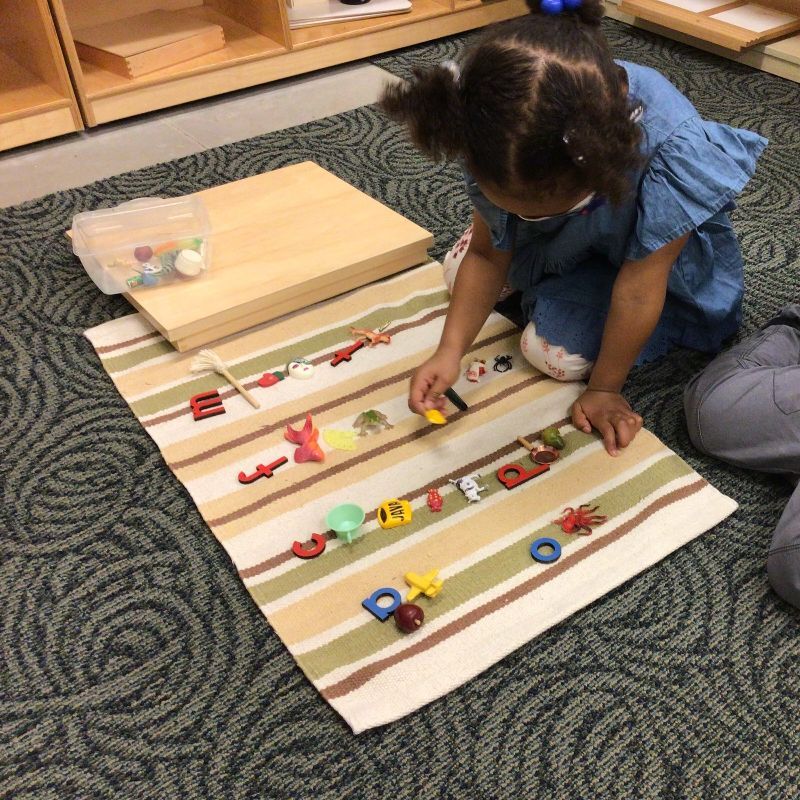October 2021
Hello, MCOL families!
Fall is here, and with that, our exploration of our wooded trails, fallen leaves, and animal tracks (deer and turkey are popular with the children)! Our Nido students enjoy the autumnal changes by leisurely walks around our unique Felician Sisters campus. We are truly grateful to be surrounded by so much great green space daily at Montessori Center of Our Lady.
As several parents suggested last year, we just launched our Hot Lunch program and did so with pizza so their children would happily partake in lunch at school. We will continue with pizza once per week throughout the first semester of school. As the Christmas holidays approach, we will look to add a second day each week for Hot Lunch, bringing your opportunities to order lunch for your child twice each week in 2022.
We received notification from the CDC that Halloween Trunk or Treats are not recommended for child care centers this school year. We will move a more petite version into the school day for the children where we can easily remain in our stable groups. This news cancels our October 29 evening event. While we were hopeful we could begin community-building events with a Trunk or Treat this year; we will continue to wait patiently.
Our efforts toward hiring additional team members to broaden our daily hours of operation continue. As of now, we have not been successful despite creative outreach and various employment opportunity postings. We have had a few prospective candidates schedule interviews with us and then not show or call. Like employers everywhere, we continue our efforts and wait patiently for Montessori-minded individuals to meet state criteria and join our team. We are actively engaged in a Novena to St. Joseph, the patron saint of workers. Please feel free to send your positive thoughts and prayers as we continue our efforts.
The Children's House Celebration of Life depicts the passage of time in your child's life and is a meaningful lesson connected directly to your child. Our Children's House team has created an explanation of this global Montessori tradition and the form you want to complete on behalf of your child. We have attached the entire document in the newsletter for your ease of use. Please complete the form below (click button) and submit ONE photograph for each year of your child's life by November 15, 2021 (unless your child’s birthday falls between now and November 15, 2021. In that case, please submit the form and photos as soon as possible). Traditional birthday party fare is something to be enjoyed at home with family and friends. Sometimes parents opt to have pizza delivered for their child's classroom, which is a favorite amongst the students. It is important to note we may not use homemade canned products. With COVID protocols, we may not receive homemade food items of any sort. Food must come from a licensed commercial kitchen and be commercially packaged.
We are gathering a few typical household items this year that you may usually recycle. We collect plastic store bags (i.e., Target, Busch's, etc.), plastic bottle lids/caps, and junk mail envelopes. Our Nido and YCC programs use plastic bags daily for bathroom-related clothing changes. The plastic bottle caps/lids are used for glue in our classroom art areas, and the junk mail envelopes are used for the art area cutting treasures as our students learn to navigate scissors. Thank you for considering us before recycling the above three items!
If you have not signed up for Remind, please do so asap. We use Remind to update you on due dates, school closures (snow, ice, building problem), and more! Gabby ([email protected]) can help you with "how-to instructions."
Inclement weather and building-related closures come to you through a schoolwide email notification, Remind, our Facebook and Instagram pages, and the ABC, NBC, CBS, and Fox television channels. We do our best to notify you by 6:30 a.m. or sooner, when possible. Please do not rely on one means of communication for such notifications as sometimes the various outlets are experiencing their challenges.
Calendar notes will always appear as the last feature in our monthly newsletter to provide you with a snapshot of the weeks ahead.
Reminder: MCOL goes outside daily unless the wind chill falls below 20 degrees. This is true for all programs. Our infants may take a quick loop or two around the circular drive, and our toddlers a reduced playtime. Please send in labeled outdoor attire as the weather becomes cooler, including a warm winter coat, waterproof mittens or gloves, waterproof winter boots, and a warm hat. Extra socks during the winter months are always a good thing, too!
So many of you have shared your thoughtfulness with everyone on our team over the past two months by sending in baked goods, donuts, lunch coffee, and more. Please know we are incredibly grateful and appreciate your acts of kindness more than you know. Each time we receive such a surprise a good day becomes great! Heartfelt gratitude ♥♥♥
Lastly, THANK YOU for your cooperation with the car line and for making the process flow efficiently. Over the next few days, I will begin rotating the calling position to new staff members, so, in time, our entire team is familiar with all car line positions, indoors and outdoors. It is essential you have your car line signs in your car and ready. We opened two new rooms this year and have several new staff members who do not know you…yet. Your car line sign is their only assurance you are picking up the correct child. That is true as they learn the calling position AND for placing children in cars. Again, thank you for your cooperation.
Until next month,
Laura
-Let's catch a glimpse inside our classrooms.
Nido
Art exploration – we explored the world of art with vegetable-based paint. In September, children used half an apple to stamp paint on paper. We then used the second half of the apple for our "polishing an apple" activity. After we used the apple for painting, we could place the apples in our wooded play yard for an animal to eat because we used vegetable-based paint. In October, the children used a pinecone to paint a pumpkin-shaped paper. The direct aim of artwork in the Nido community is to allow the child to promote independent exploration, engagement and to learn how to work in a respectful, artful way within the classroom. Indirectly, the child is learning self-discovery through a multi-sensory exploration using their eyes, hands, and mind. Children are also beginning to develop their fine motor skills in preparation for later writing as they also refine their hand-eye coordination. Using objects in nature encourages children to think about how an object can be reused and see nature differently.
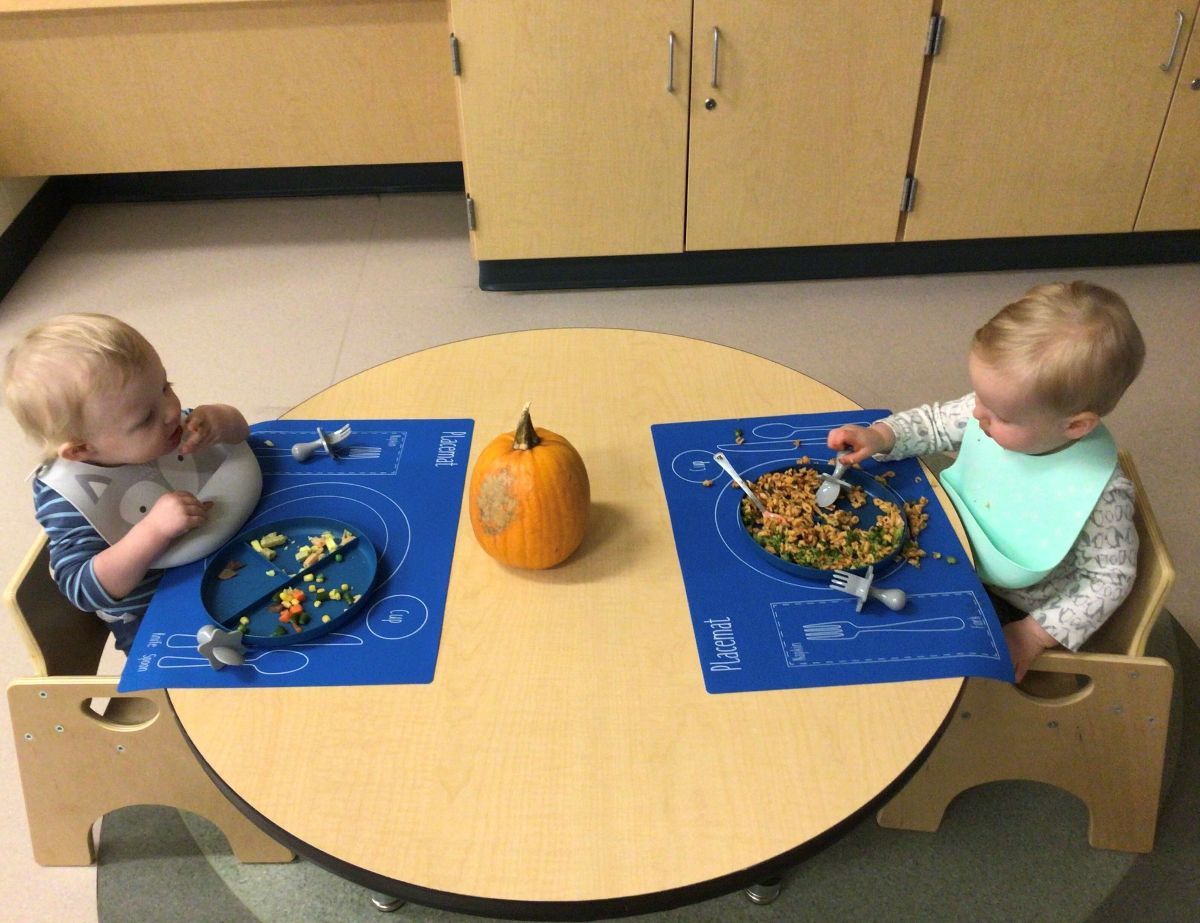
Independent Eating – from the start of the school year, we have focused on teaching the child to eat independently. Each child develops at their own pace. They begin at the weaning table eating one-on-one with the teacher as they learn how to properly use their utensils and cup and grace and courtesy through proper table manners such as remaining seated while eating. They then will progress to a community table for two. Children do not eat out of their lunch boxes. Instead, their food is placed on their place setting, complete with a placemat, plate or bowl, tiny infant-sized utensils, cup of milk or water (towards the end of their meal), and a napkin. The community table may be decorated with a centerpiece according to the season, such as a small vase of flowers, a small pumpkin or gourd, an LED "candle" in a sealed jar, etc. The child enjoys their meal or snack uninterrupted. The child can focus on eating and the experience.
Autumn-Themed Treasure Basket - this month we introduced autumn-themed objects in the treasure basket. The treasure basket contains things the child can touch and explore freely while also learning the object's name. The items introduced so far are a pumpkin, an acorn (placed in a see-through box to eliminate any choking hazard), and a leaf changing colors. For older infants, we extended this activity into a picture to object matching. The direct aim of our treasure basket is to allow the child to discover nature in the autumn season and expand their vocabulary. Our indirect aims include developing the ability to explore, learn, work independently, grow curiosity, build concentration and self-confidence.
Young Children's Community
Practical Life – Young children love being a part of caring for the environment they inhabit, both at home and school. For the now walking toddler, exercising care for themselves and their classroom environment is their driving force. Instinctually, the toddler recognizes a change within them now that they are upright, just like many adults around them. That change becomes the internal catalyst for their drive toward functional independence. The child’s functional independence (ability to do for themselves) is the very thing that allows their intellect to be independent of those around them.
Dr. Montessori knew Practical Life activities were the foundation of a classroom and the child’s functional independence from birth. As such, we offer rich opportunities that slowly allow the child to become functionally independent with the entire classroom designed to suit those needs. The Montessori method is based on observation, with the teacher observing children throughout each day and changing the environment and materials for them as their needs change. We do this by providing concrete, practical experiences by which our students do authentic and purposeful work.
Children have success in doing so and enjoy this newfound level of functional independence and competency! Through the work in Practical Life, the door to responsibility and self-awareness begins to connect the child to the world at large.
"The activities are called ‘Exercises in Practical life’ because real everyday life is carried on in which all housework is entrusted to the little ones who execute, with devotion and accuracy, their domestic duties becoming singularly calm and dignified.”
– Dr. Maria Montessori
Our Young Children’s Community affords the child uninterrupted time to explore activities through various mediums that may otherwise be withheld from them because of the potential “mess.” For us, there is beauty in the mess and resulting competence that comes from learning how to care for oneself and the environment.
Children's House 1
All things with intention is a large part of an authentic Montessori classroom environment. We isolate one difficulty before introducing another. Doing so allows the young child to immerse themselves in the new skill being taught versus multiple new skills introduced simultaneously. Such an example exists with an artwork we recently explored. First, our students worked with the skill of tearing paper into smaller pieces. We collected the torn paper in two community vessels that all students contributed toward saving. Next, we learned how to use glue (no glue sticks). 😊 Then, we learned how to glue in a more petite isolated lesson of gluing small pieces of paper to a more significant portion of the paper. Next, we learned a bit about the poppy flower. Artist, Georgia O’Keefe used the poppy flower in some of her artwork. Last, we created a field of poppy flowers using the paper we had carefully torn since school began and our newly acquired gluing skills (photograph below). One skill builds upon another created from beginning to end by the child as we allow the process to unfold organically.
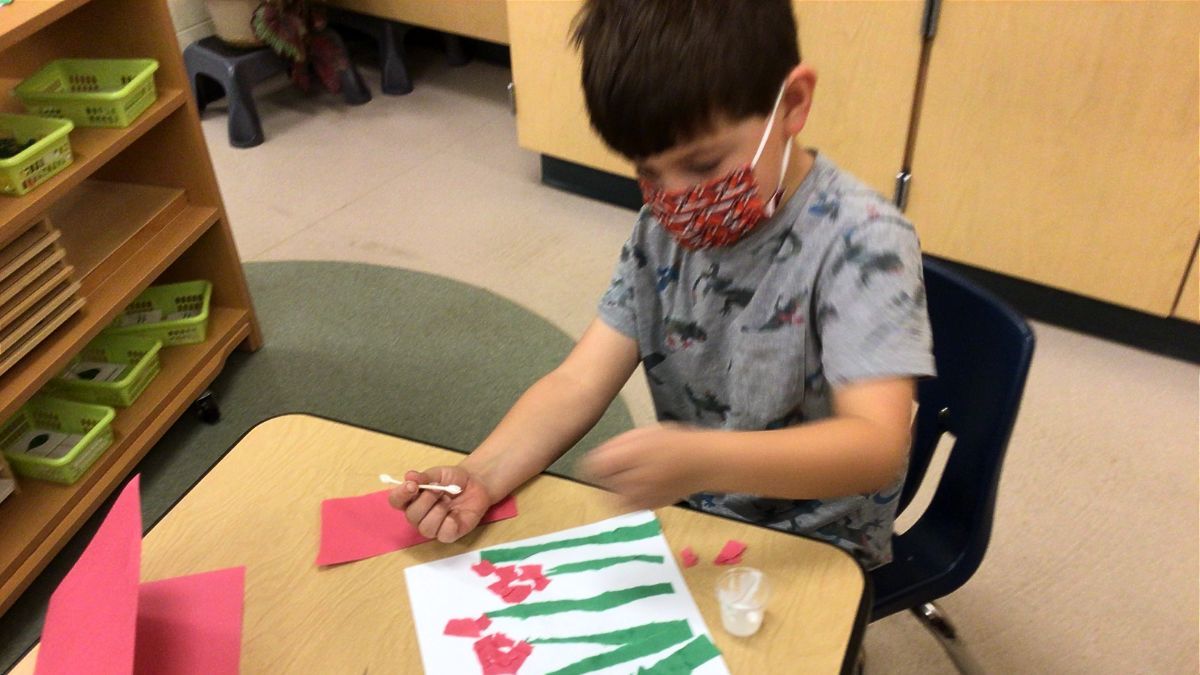
Dr. Montessori created color tablets
for both primary and secondary colors. The focus of each color tablet is the color itself, free of competing distractions. The photograph below (left) shows a child working with Color Box 1 (primary colors).
While not original to Dr. Montessori, our Children’s House environments have a Peace Corner. A place designed for one child at a time. A place where a child can be alone, regulate, or explore the calming work is the Peace Corner. Our Peace Corners are a favorite amongst our Children’s House classrooms for the sense of calm a child feels. You can see a child enjoying a quiet moment in the Peace corner while using a miniature Zen garden.
Children's House 2
Did you know our Practical Life areas of each Children’s House classroom is the foundation of the program as a whole? It’s true! It is through the exercises of Practical Life that a child develops and strengthens their functional independence, sense of external and internal order, gross and fine motor coordination, concentration, and sense of personal competence. Each exercise teaches the child a specific skill that is first isolated to the work itself and over time to purpose real life work in the classroom. In the photograph below (left), you see a child carefully pouring from one vessel to another. The child pours slowly and deliberately controlling the movements of their hand and arm so as not to spill. Pouring is one example of many others in the Practical Life area of our classrooms. Pouring is done with a wide variety of mediums that are both dry and wet. Examples of real life work in the classroom includes pouring their own water during snack or milk during lunch, watering the classroom plants or outdoor garden beds, pouring ingredients in a baking activity and more!
Montessori math approaches quantity and numerical symbols separately once the child has internalized the preparation needed for such concepts. Once the child has mastered quantity and the names attached to each amount and the numerical symbol with their names, the child is invited to associate the quantity and numerical symbol. In the photograph above (right), you see a child tracing a sandpaper numeral (one to be exact). Dr. Montessori used the muscle memory of the hands to assist students in their learning. We spend significant time with 1-10 as it is the base of the decimal system. The 1-10 materials (quantity and numerals) are larger in size as we prepare the child’s mathematical mind and become smaller as the work continues and the brain begins to organize itself for abstraction. Once the child masters 1-10 in all its forms within our classrooms, we introduce the decimal system. Our approach to education is not only the use of concrete materials to introduce abstract concepts, but we also introduce the whole of a topic first, followed by the parts, and then tie everything back to the whole.
Children's House 3
“The senses, being explorers of the world, open the way to knowledge.”- Maria Montessori
We are incredibly blessed with the green space that surrounds our school. Our students have ample opportunities to be outdoors, both playing on our playgrounds, walking outdoors, and exploring our wooded trails bringing the botany and zoology components of our curriculum to life. In the photograph below, we see someone who may very well become a future botanist taking an interest in leaves gathered outdoors. The interest in the leaf’s anatomy is highlighted through the lens of a magnifying glass. Do you remember how much hand-eye coordination it takes to skillfully hold a leaf in one hand and the magnifying lens in the other using the correct linear order to get the best view of the leaf? It’s no small feat, yet oh so worth the time! What better way to move from the Parts of a Tree puzzle to examining a leaf using a magnifying glass?
Montessori language lessons begin with early language concepts such as categorizing, finding the things that are the same, different, sequencing what comes first, second, third, etc. As the child masters those lessons, we introduce the sandpapers letters, and the child begins tracing the letter and learning the accompanying phonetic sound. Once a child knows the first eight phonetic sounds, we invite them to identify the initial sound in a word. We do this using small objects, which naturally draw the young child. In the photograph above, we see the child has placed (from left to right) the letter sounds she now knows across the top of her rug. Next, one object at a time, she selects an object, says the object's name aloud, isolates the beginning phonetic sounds, and places the object under the correct letter. When done, she will invite her teacher to sit with her while she moves through the placement of each object, demonstrating her ability to identify the beginning phonetic sound.
Calendar Reminders
Monday, November 1 - No School: Professional Development Day
Sunday, November 7- Daylight Savings: Turn clocks back 1 hour
Monday, November 15- eTuition Payment Due
Wednesday, November 24 - Half Day: Beginning of Thanksgiving Break
Monday, November 29- Return to School
A Felician - Sponsored Ministry
Montessori Center of Our Lady
Montessori Center of Our Lady
Powered by Nido Marketing

